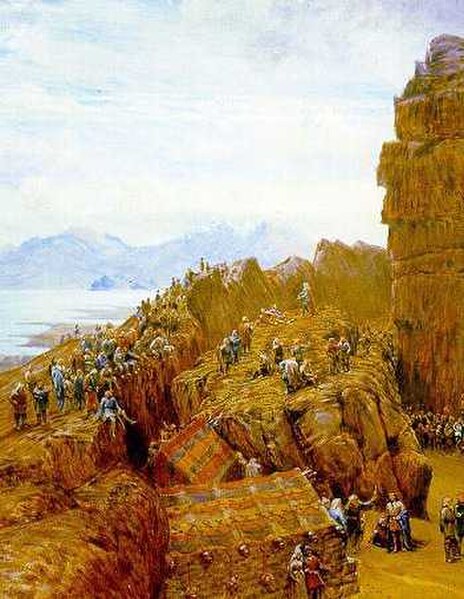Ingólfr Arnarson, in some sources named Bjǫrnólfsson,
is commonly recognized as the first permanent Norse settler of Iceland, together with his wife Hallveig Fróðadóttir and foster brother Hjörleifr Hróðmarsson. According to tradition, they settled in Reykjavík in 874.
Ingolf tager Island i besiddelse by Johan Peter Raadsig (1850)
The famous statue by Einar Jónsson, up on Arnarhóll in Reykjavík
Monument at Ingólfshöfði, the site where Ingólfur is said to have passed his first winter in Iceland
Statue of Ingólfur Arnarson at Rivedal in Sogn og Fjordane
The settlement of Iceland is generally believed to have begun in the second half of the ninth century, when Norse settlers migrated across the North Atlantic. The reasons for the migration are uncertain: later in the Middle Ages Icelanders themselves tended to cite civil strife brought about by the ambitions of the Norwegian king Harald I of Norway, but modern historians focus on deeper factors, such as a shortage of arable land in Scandinavia. Unlike Great Britain and Ireland, Iceland was unsettled land and could be claimed without conflict with existing inhabitants.
Norsemen landing in Iceland in 872
19th century painting showing a romanticised view of 11th century Alþingi session
Ingólfur commands his high-seat pillars to be erected






